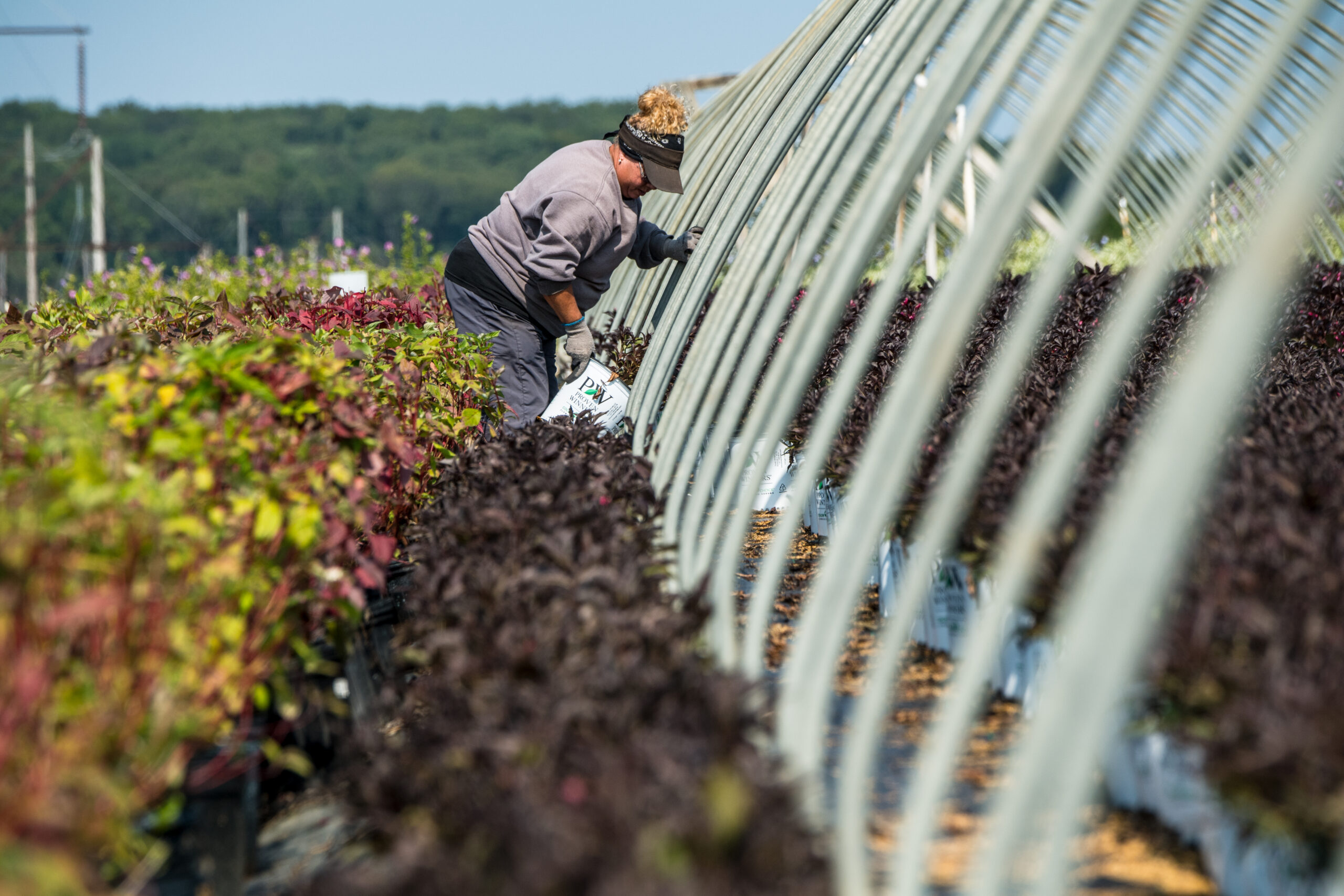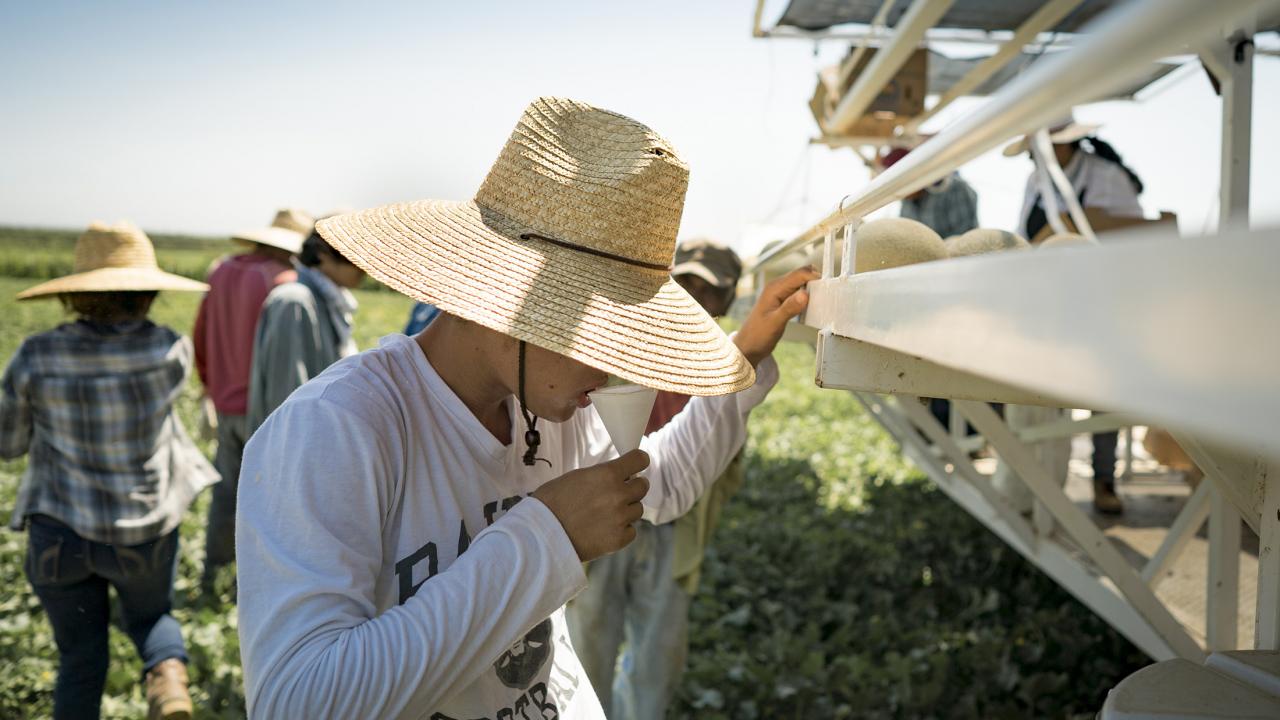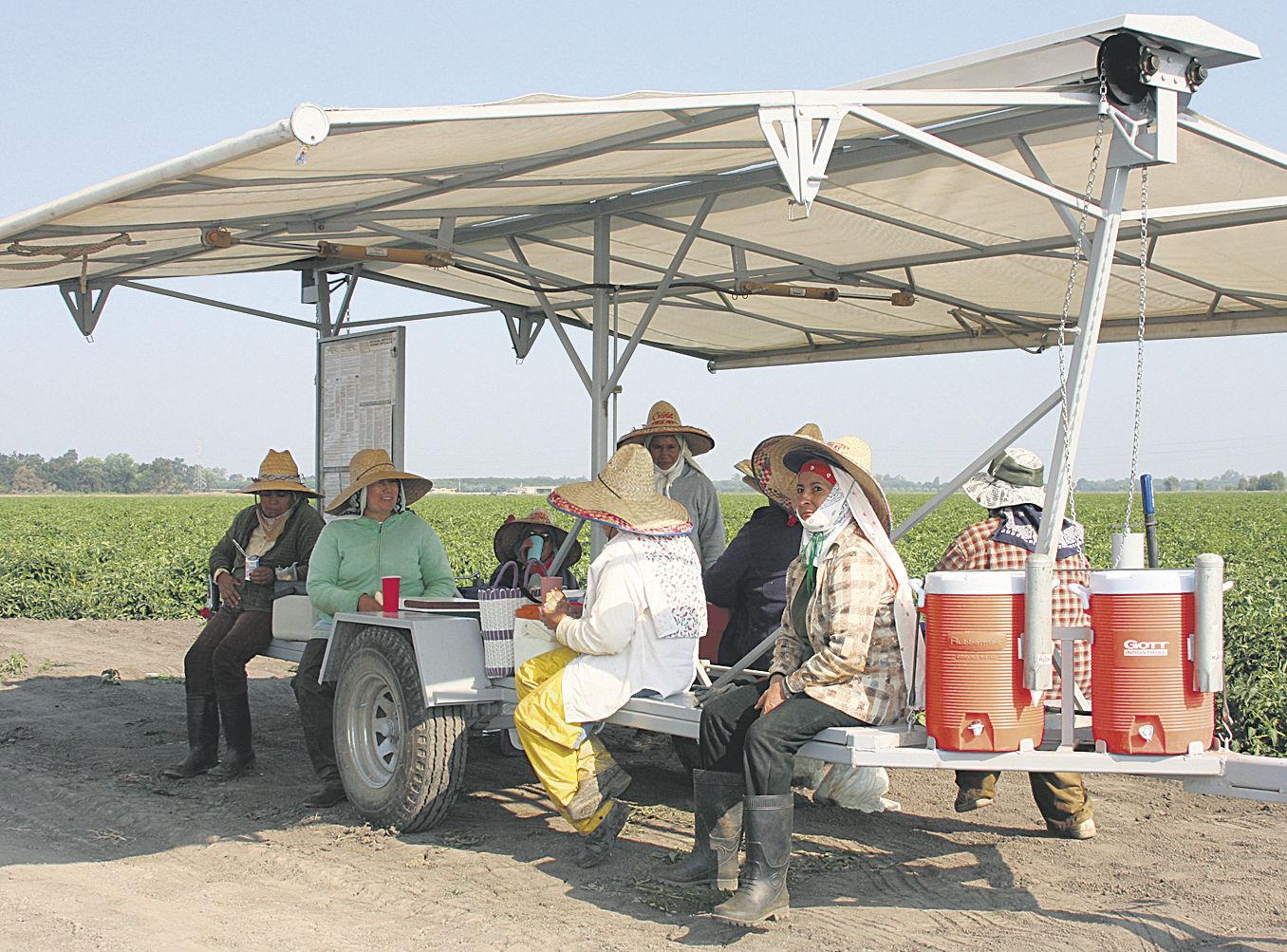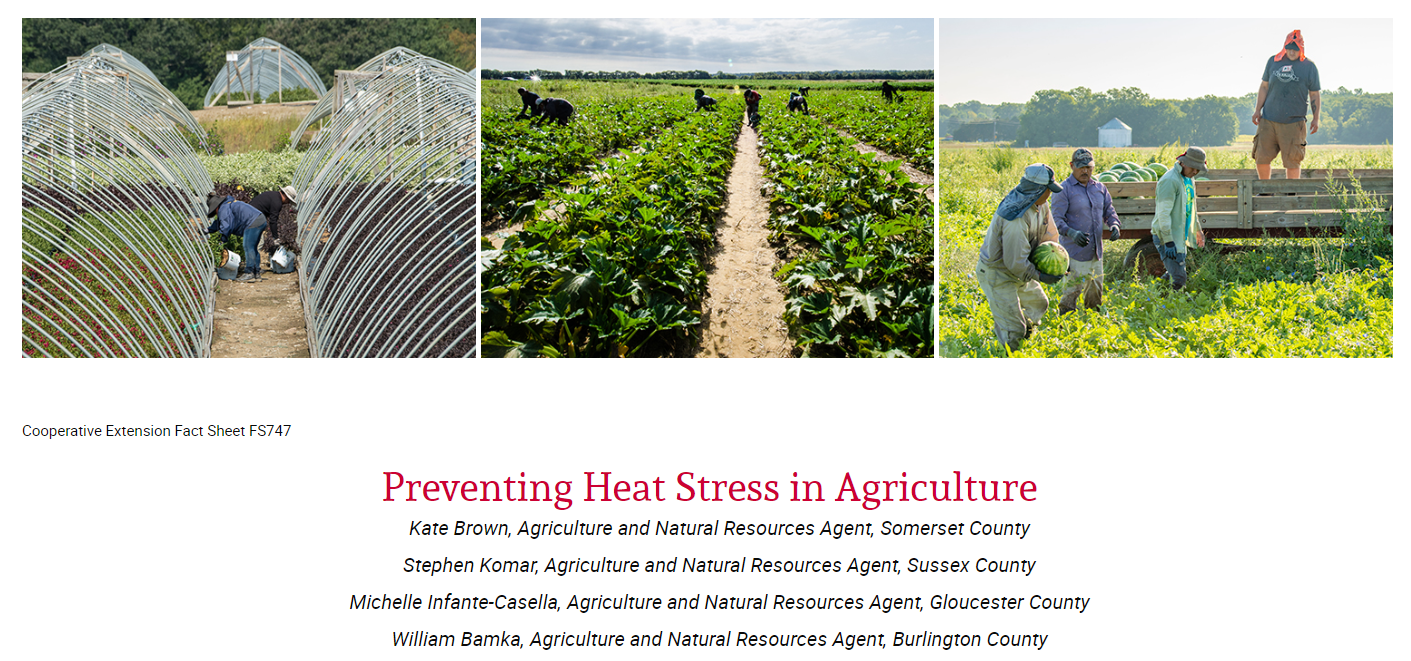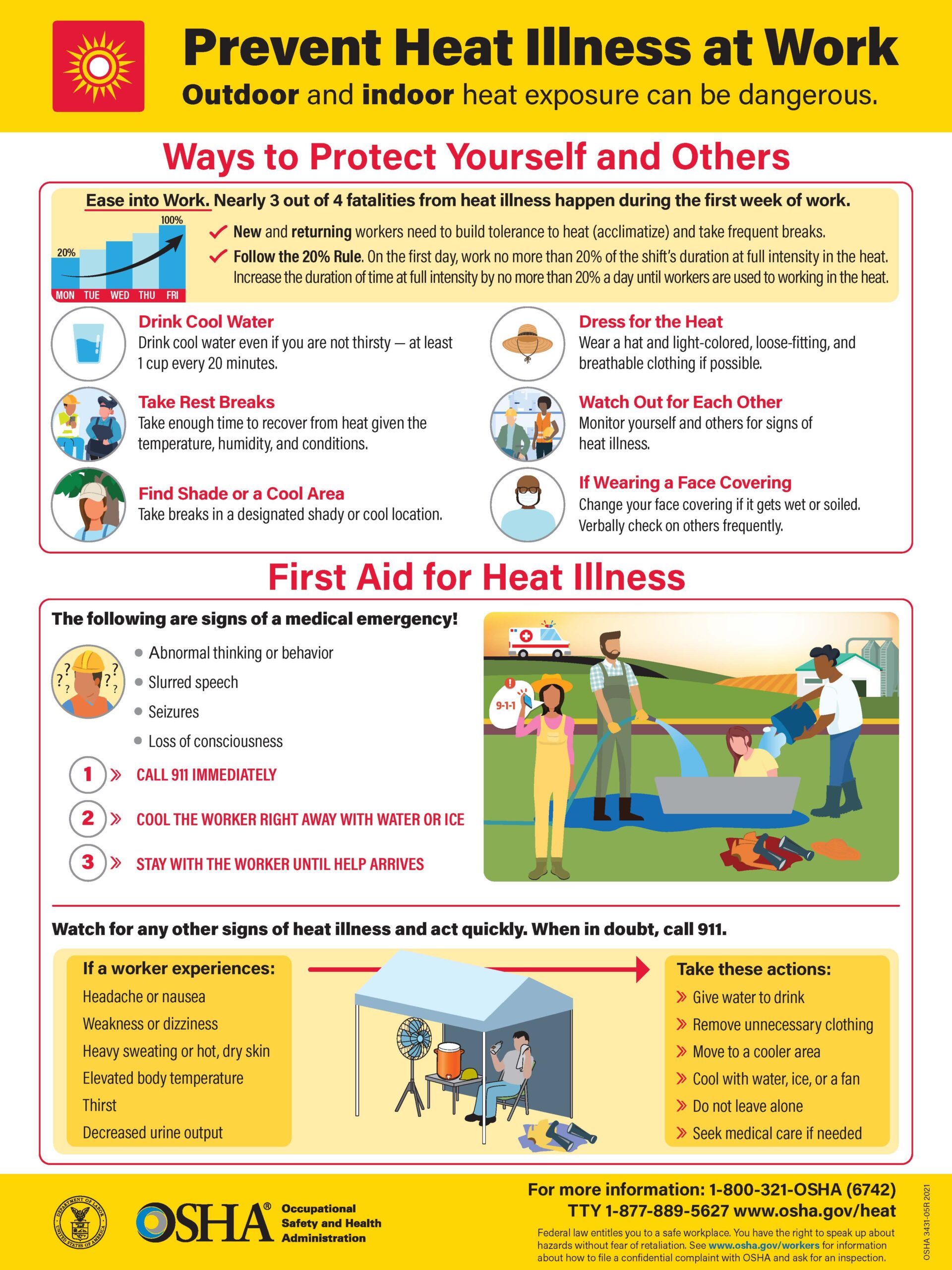 The outdoor nature of crop and livestock production exposes farmers and farm workers to variable weather conditions. During the summer months, periods of high heat can increase the risk of heat stress and heat-related illness.
The outdoor nature of crop and livestock production exposes farmers and farm workers to variable weather conditions. During the summer months, periods of high heat can increase the risk of heat stress and heat-related illness.
Farm employers can proactively reduce the risk of heat stress in farmworkers by providing training to all employees on heat exposure risks, prevention actions, and first aid. In this way, employees will be able recognize symptoms of heat-related illness in themselves and others, take preventative steps to mitigate risk of heat stress, understand personal risk factors, and know how to respond in case of emergency.
- For resources to aid in worker training, check out the comprehensive Occupational Safety and Health Administration (OSHA) website on Working in Outdoor and Indoor Heat Environments.
Once training is complete, farm employers may wish to reinforce training with posters in high traffic areas such as the common break area, near farmworker housing, or at the central display location. OSHA has developed a ‘Prevent Heat Illness at Work’ poster for this purpose (available in English and Spanish) as well as a pocket-sized pamphlet (available in 21 languages) for distribution among farmworkers.
